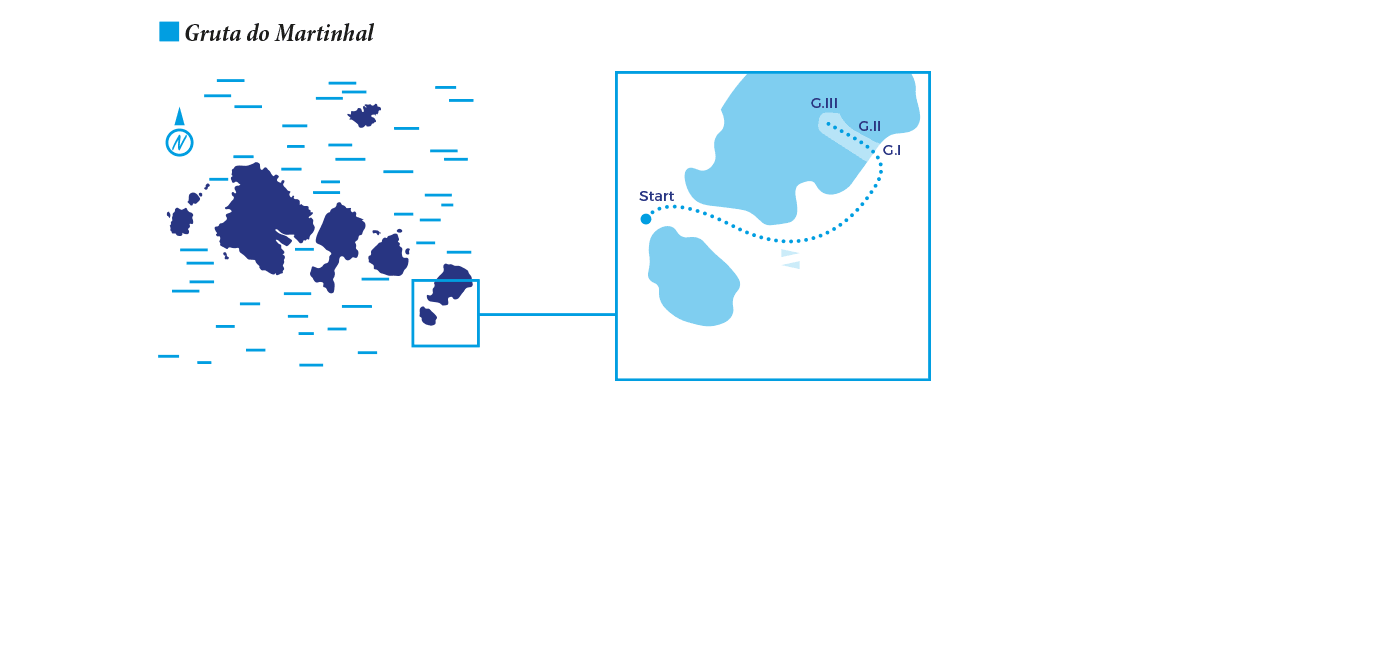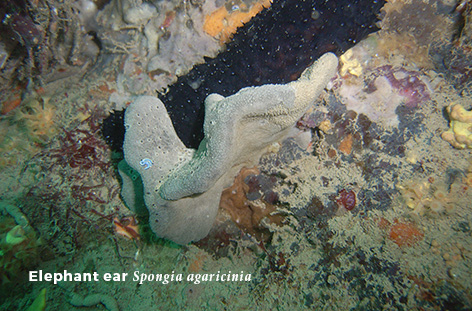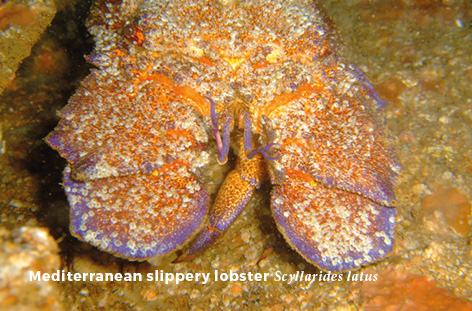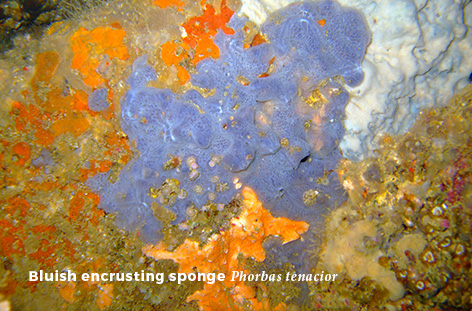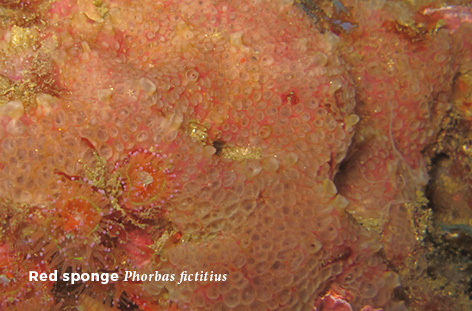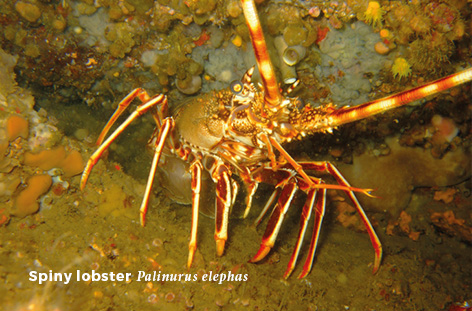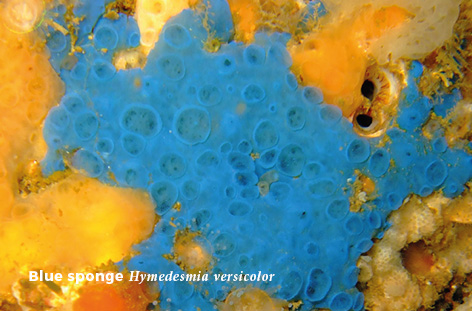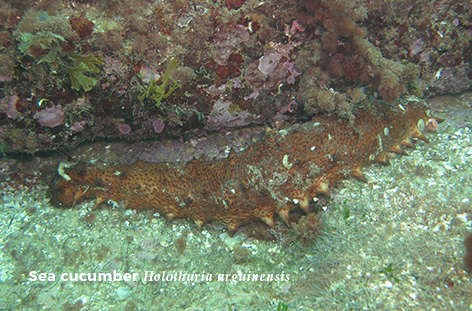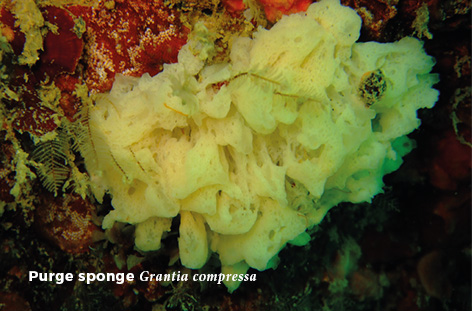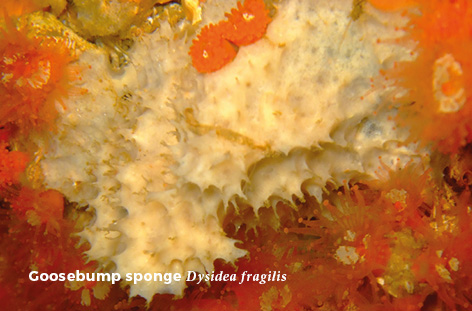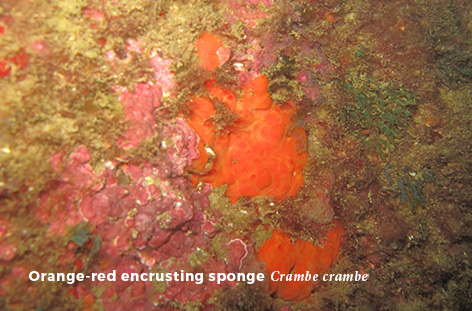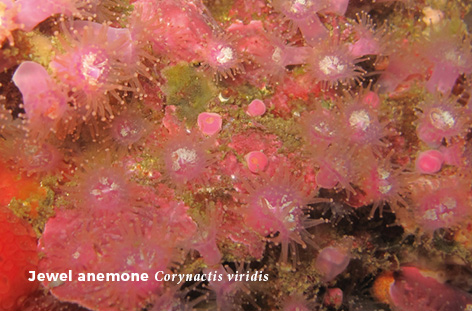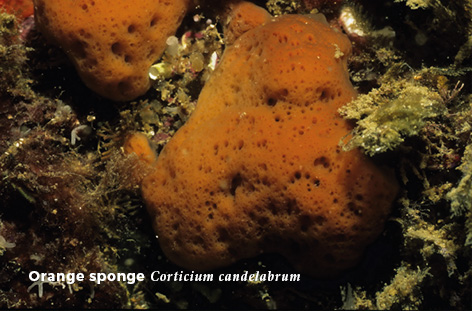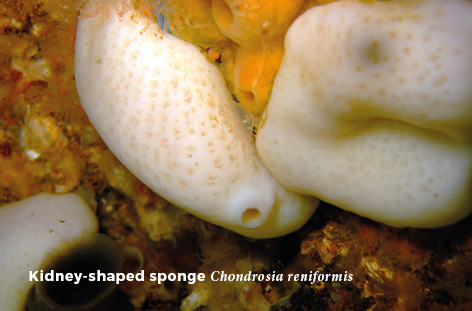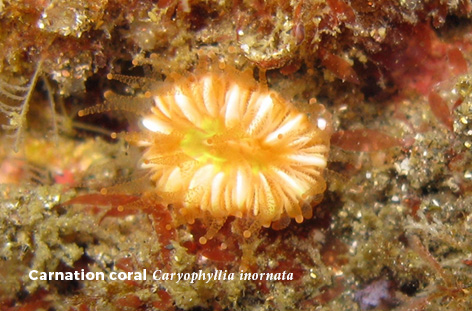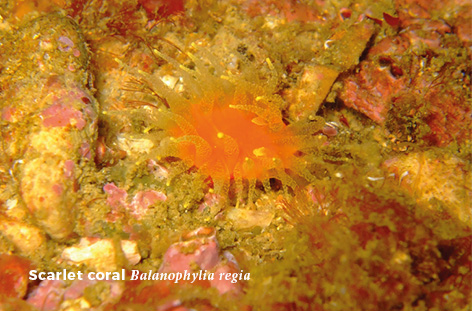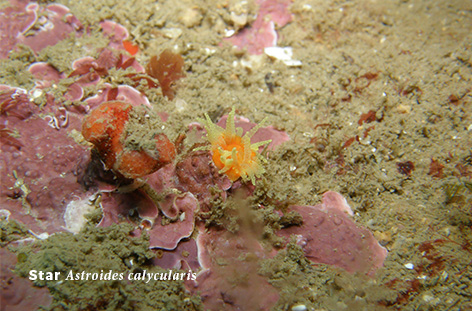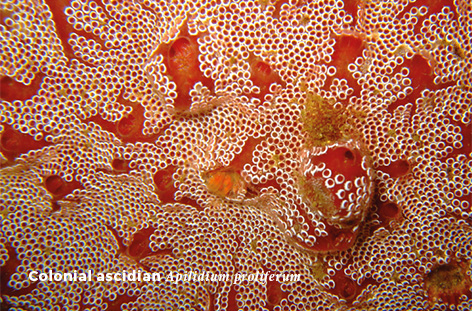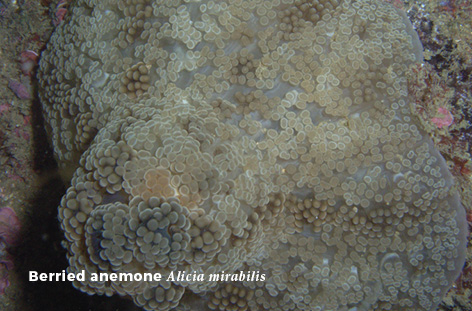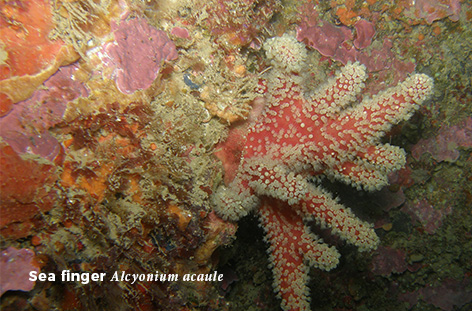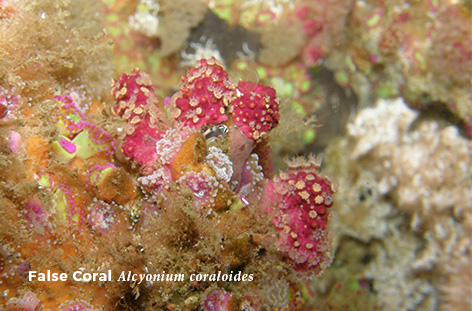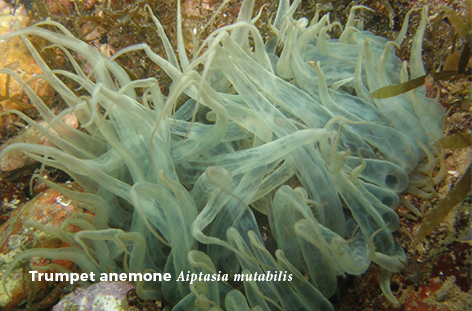Gruta do Martinhal (Sagres)
Situated on the West side of the islets of Martinhal, this sea cave is one of the smallest of Sagres, with low complexity topography, a single main entrance, and 16m deep. The entrance is more than three meters in height and the hall is about 10m long. The sea cave is in general moderately illuminated, being highly exposed to wave action.
Once in the sea cave the diver can appreciate three different environments, according to the influence of the different levels of light intensity with their corresponding biological communities. Nevertheless, the observable marine species are mainly characteristic of semi-dark areas.
Zone G.I with higher luminosity, is located near the entrance. This area is frequently inhabited by species such as the tubular sea cucumber (Holothuria arguinensis) or the jewel anemone (Corynactis viridis).
Next zone G.II presents characteristic fauna of semi-dark aereas such as the scarlet coral (Balanophyllia regia) and some sponge species (e.g. Crambe crambe, Cliona celata, Chondrosia reniformis, Spongia agaricina).
The last zone G.III has species that only tolerate low levels of light intesity, and are therefore, truly characteristic of sea cave environments, such as various types of sponges (e.g. Hymedesmia versicolor, Corticium candelabrum, Phorbas tenacior) and corals (ex. Astroides calycularis, Caryophyllia inornata). Inside the cave, the diver can observe rock crevices where the common spiny lobster (Palinurus elephas) can be spoted.
ACESSBoat |
HARBOUR DISTANCE0,7 nautical miles /5 min. |
DIFFICULTYMedium/High |
AVERAGE TIME45/50 min. |
MAX. DEPH25m |
HABITATCave |
LANDSCAPE INTERESTMedium |
BIOLOGICAL INTERESTHigh |
CONSERVATIONS STATUSPMSACV/MPA; SCI |
SCUBA DIVING |
CERTIFICATIONDiver Level 2 – Autonomous Diver |
Conservation
This area requires specific and appropriate protective measure since it is a Marine Protected Area (MPA), integrated in a Marine Park (Parque Marinho do Sudoeste Alentejano e Costa Vicentina- PMSACV), and a Site of Community Interest (SCI). This habitat, like others in Sagres, is fragmented and isolated, with rare deep-sea species occuring in coastal areas, being therefore considered vulnerable species (UE_Habitat Directive).
WARNING: Due to the nature of this area, extra care in buoyancy control is essential, so as not to disturb the organisms living on the bottom and to ensure good visibility.

